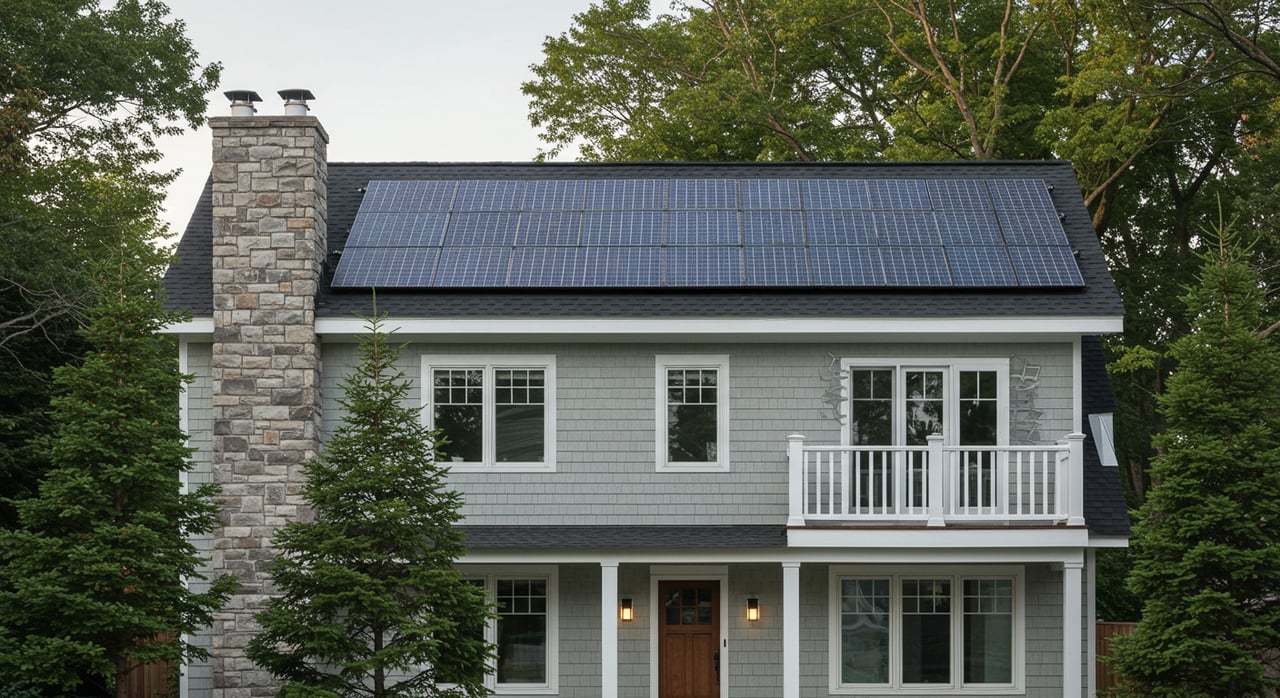People continually seek ways to live more ethical and sustainable lives in today’s evolving world. One way people are living more sustainably is by installing solar panels in their homes. Since 2008, hundreds of thousands of solar panels have popped up in properties across the United States.
While two primary technologies harness the sun's power and turn it into electricity, photovoltaics, or PV, is the form used in homes. These panels are installed on rooftops or fields where the sun’s rays beam down, photons from the sunlight are absorbed by the cells in the panel, and an electric field is created across the layers causing electricity to flow. Solar panels are built to work in various climates, but in some cases, rooftops may not be suitable for solar systems. Read more to find out if going solar is the right option for you.
Is your roof a good match for solar panels?
The direction, pitch, and age of your roof are essential factors when considering whether or not to install solar panels. A roof facing south or west is optimal for rooftop solar, though it’s still possible to produce plenty of energy with solar panels on east-facing roofs. A roof with an obstruction-free pitch of 30 to 45 degrees is also ideal. Solar power could be right for you if your roof meets these requirements and isn’t shadowed by any buildings or trees.
How about climate?
One of the biggest misconceptions about solar power is the belief that you need to live in a warm, sunny climate like California or Arizona to utilize the technology. Surprisingly, solar panel output increases in colder temperatures. The energy production efficiency of panels declines as temperatures rise between 87 and 91 degrees; thus, PV solar panel production works best in colder temperatures. All of this information aside, California is still the top producer of solar energy.
What about local regulations?
Do you live in a community governed by a homeowner’s association? The chances are that HOA has regulations regarding solar panel installation. There are also likely to be local permit requirements, whether it’s from the city or county building department.
Have you considered getting a Tesla Powerwall?
Powerwall is an integrated battery system that stores solar energy for backup protection. If the grid goes down, your power stays on. You can power your entire home with Powerwall, making you less reliant on the grid by storing solar energy for use when the sun isn’t shining. Not only will Powerwall be your ultimate power backup, but you can also add several units to lower your carbon footprint further and prepare for abrupt power outages.
With power accessible on-demand, going off-grid has never been easier. Consider a Tesla Powerwall if you’re trying to be more independent and live a more sustainable existence. Our future depends on people making conscious choices every day, so you might as well start with incorporating solar power into your everyday life.
It’s also worth checking out Tesla’s Solar Roof. The sleek and seamless roof tiles allow for solar generation without affecting the aesthetics of your home. Compatible with the Tesla Powerwall, you can securely and discretely power your home anytime.
Are you ready to live a more conscious and sustainable lifestyle in Los Angeles? Contact Nina Kurtz to assist in your search for Topanga, Calabasas, Pacific Palisades, or Malibu luxury real estate.



